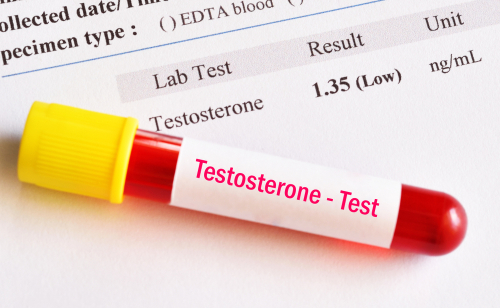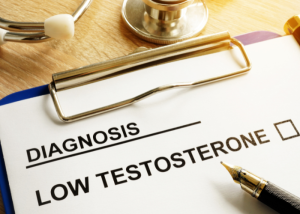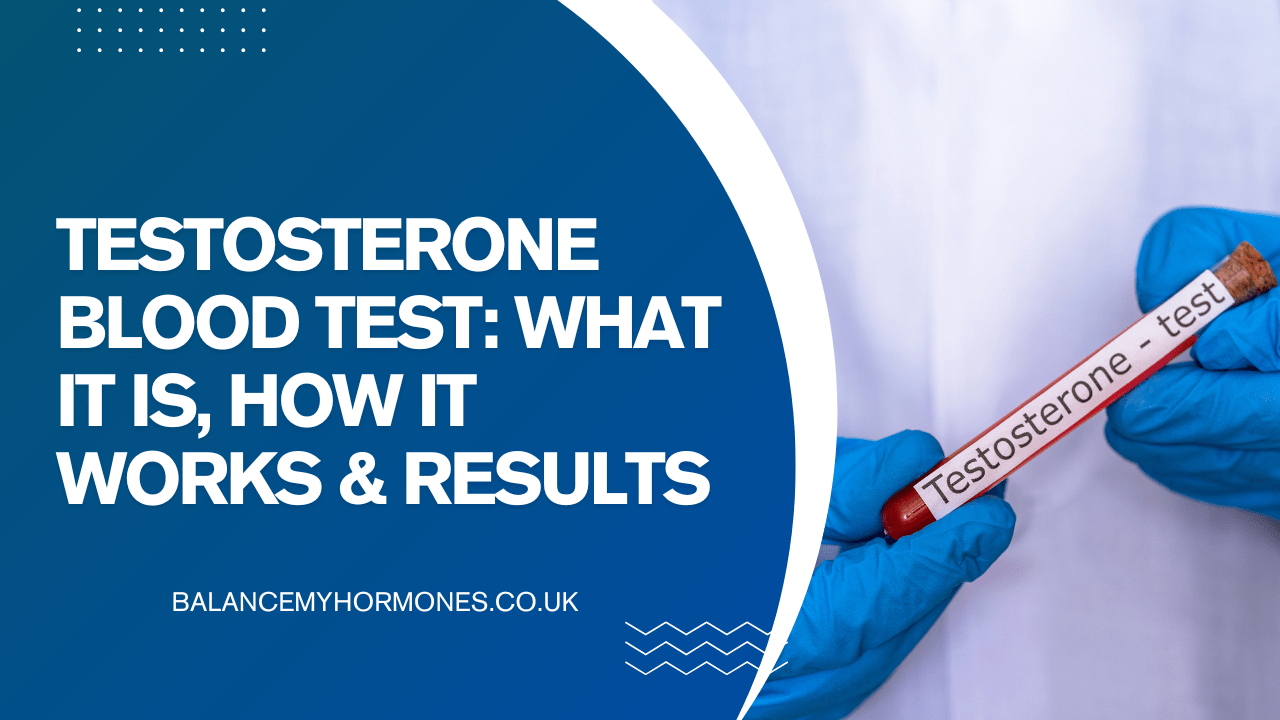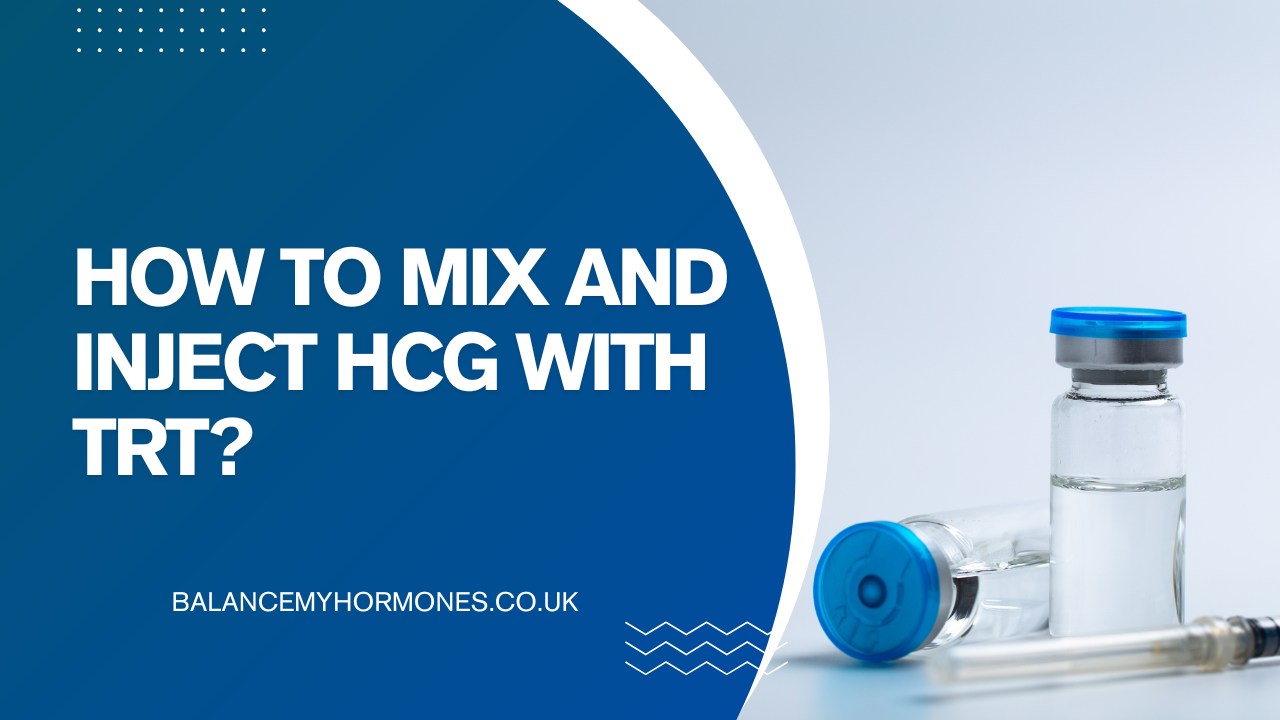
By Mike Kocsis | 7 minutes read | Last updated: April 30, 2025 Categories: Testosterone
Medically Reviewed by Dr. George Touliatos
Both men and women produce testosterone in a healthy range. For men, it is 300 to 1,000 nanograms per deciliter (ng/dL) or 10 to 35 nanomoles per litre (nmol/L), and for women, it is 15 to 70 ng/dL or 0.5 to 2.4 nmol/L.
Abnormal testosterone levels — whether too high or too low — can lead to a variety of health issues.
Your doctor may suggest that you get your testosterone hormone levels checked if you are experiencing symptoms related to it. Testosterone levels are generally tested through blood, but sometimes saliva and urine may also be used.
Testosterone Blood Test or Serum Test
Taking a serum or blood test really is the gold standard when it comes to checking your testosterone levels, and this is the way we at Balance My Hormones test your testosterone levels.
Total testosterone blood test is by far the most accurate way to measure your hormones. Ideally, if you do a blood test, you should look to get the following markers at a minimum.
At Balance My Hormones, we check all of these and more:
- Serum testosterone
- Free testosterone
- Sex hormone binding globulin (SHBG)
- Luteinising hormone (LH)
- Oestradiol
- Prolactin
Before we discuss other ways to check testosterone levels, let’s first understand these markers.
What Do These Markers Mean & Why Do You Need Them?
These markers provide a complete picture of your hormonal health. And your doctor needs to understand your complete hormonal profile to make an accurate diagnosis.
Serum Testosterone
Your blood carries testosterone (a male sex hormone) in two forms – free and protein-bound.
Serum testosterone is the total amount of testosterone in your blood, meaning it is the sum of free and bound testosterone.
Free Testosterone
Free testosterone is the “active” form of testosterone that is not bound to proteins like SHBG or albumin. It is readily available to body tissues for use while bound testosterone is unavailable.
Free testosterone makes up only 2% to 3% of your total serum testosterone.
A free testosterone test measures free testosterone levels in your blood sample.
Sex Hormone Binding Globulin (SHBG)
SHBG is a carrier protein that is responsible for managing levels of sex hormones (i.e. oestrogen and testosterone) in the blood.
Its levels have a strong correlation with your testosterone and can influence the amount of free testosterone in your blood.
For example, you may have a high serum testosterone level, but if your SHBG is very high, your free testosterone will be low. Without this marker, you cannot accurately calculate your free testosterone.
Luteinising hormone (LH)
Essentially, LH is a signal that is sent by the brain to the testes to produce testosterone. It is useful to test for this because it helps show whether you have low testosterone levels due to low LH or some other reason.
Oestradiol
Oestradiol is an oestrogen hormone found in both men and women.
Its elevated levels can interfere with testosterone production and lead to signs and symptoms of low testosterone. Hence it is important to include this marker in any screening for testosterone.
Prolactin
The role of the hormone prolactin in men is not fully understood. However, low and high levels are associated with low libido and erectile dysfunction.
Furthermore, the hypersecretion of prolactin is associated with a tumour of the pituitary gland. This can affect testosterone levels and is, therefore, worth evaluating on a testosterone blood test.
How is a Testosterone Blood Test Done?
A testosterone blood test is mostly done early in the morning, between 7 a.m. to 10 a.m. It is the time when testosterone levels are the highest, and then they gradually decline throughout the day.
Your healthcare provider will draw a blood sample from your vein through a small needle. They will collect blood in a vial or test tube.
Once they have drawn enough blood, they will remove the needle and place a bandage in its place. The sample will be sent to an accredited lab for analysis.
The entire procedure takes about 5 minutes. And you will most likely get test results in 2 to 3 working days, but it can take longer as well.
Testosterone blood test has no or very little risk. You might experience minor discomfort, slight bruising, or light bleeding at the site where the needle was inserted.
Urine Test
A urine test, also known as a 24-hour urinary panel, is another good option to get your testosterone levels checked.
One main advantage of the urine test is that it takes an average of your testosterone levels over 24 hours. Whereas a blood test is a snapshot of a given moment in time, so is also susceptible to day-to-day fluctuations.
A urine test is probably not suitable for you if you want an accurate test of your testosterone level.
It can be useful however to measure stress hormones such as DHEA and cortisol. However, that’s beyond the scope of this article.
Saliva Test
In recent years, saliva testing kits have become popular among doctors and patients.
Home-testing saliva kits are marketed as cheap alternatives to urine and blood tests. However, their accuracy in comparison to other tests is debatable.
As far as we are concerned, there are a few drawbacks to saliva testing:
- Food and drink can influence the test and cause abnormal readings
- It is difficult to collect enough saliva for a sample – especially when over 40
- Certain medications and drugs can skew the results
Needless to say, we do not recommend taking a saliva test to get an accurate reading of your testosterone levels.
| Method | Pros | Cons |
| Serum (Blood) Test |
|
|
| Urine Test |
|
|
| Saliva Test |
|
|
What are At-Home Testosterone Test Kits?
At-home testosterone test or finger-prick tests allow you to check your testosterone levels without visiting a clinic.
They come with all you need, including a finger-prick device, to collect your sample and send it to a registered lab where it is tested and analysed. Your results are made available online through a secure portal or sent via mail.
Why Do You Need a Testosterone Levels Test?
Doctors conduct a testosterone test for various reasons. For instance, in children, it is mostly done to identify the cause of late or early puberty. If their testosterone levels are below the normal testosterone levels range, they may experience late puberty.
In men, healthcare providers generally order testosterone tests if they are experiencing low testosterone or testosterone deficiency symptoms like:
- Low sex drive
- Low sperm production
- Low energy levels
- Decreased muscle mass
- Low muscle strength
- Erectile dysfunction
- Persistent fatigue
Regular total testosterone tests may also be done if you are taking testosterone replacement therapy (TRT) or hormone therapy. It helps doctors evaluate the impact of testosterone doses on your serum testosterone levels.
Women have testosterone tests when they experience high testosterone symptoms. Test results help doctors rule out possible causes of these symptoms.
What Do Testosterone Test Results Mean?
In men, if test results show you have low testosterone levels, it could point to several health conditions, including:
- Primary hypogonadism
- Secondary hypogonadism
- Injury to the testicles
- A disorder of the pituitary
Similarly, in women, high testosterone levels could indicate any of the following medical conditions:
- Polycystic ovary syndrome (PCOS)
- A pituitary gland disorder
- Ovarian cancer
An important point to remember here is that abnormal results do not always mean you have any of these health problems.
Testosterone levels vary with age, time of the day, and even based on the medication you are taking.
Your doctor will conduct additional tests, evaluate your symptoms and medical history and more before making any conclusion.
Does a Regular Blood Test Show Testosterone Levels?
A regular blood test (like a standard complete blood count or CBC) does not generally measure testosterone levels in men.
Testosterone testing requires a specific hormone blood test, often called a serum testosterone test. Its sample collection procedure is the same as that of CBC.
Blood Tests at Balance My Hormones
At Balance My Hormones, you can check your testosterone levels with expert analysis all in the comfort of your own home.
You can order blood tests online here, or you can speak to one of our medical case managers who can arrange your blood tests for you.
Our blood test kits are delivered in discrete packaging and are delivered to your front door to be administered in the comfort of your home. They are then processed in accredited labs, and the results are analysed by our specialist doctors.
Final Thoughts
If you have symptoms of low testosterone, then it is worth getting a test to determine your testosterone levels.
The causes of low T levels can be down to many reasons. But, one thing we do know is that too often, hypogonadal men are going undiagnosed and suffering the symptoms in silence.
The symptoms of low testosterone are shared with many other conditions, so it is easy to attribute low T symptoms to other conditions or even old age.
Without a test to confirm your testosterone levels, it is just speculation.
If you want to take a test to find out what your testosterone levels are, contact us today, and we can arrange that for you.
We offer a range of testosterone blood tests, both at-home finger-prick tests or blood draw services with a nurse or registered practitioner.
References
Rivas, A.M., Mulkey, Z., Lado-Abeal, J. and Yarbrough, S., 2014, October. Diagnosing and managing low serum testosterone. In Baylor University Medical Center Proceedings (Vol. 27, No. 4, pp. 321-324). Taylor & Francis.
Zitzmann, M. and Nieschlag, E., 2001. Testosterone levels in healthy men and the relation to behavioural and physical characteristics: facts and constructs. European Journal of Endocrinology, 144(3), pp.183-197.
Evidence Based Research
This article has been researched and written based on scientific evidence and fact sheets that have then been crossed checked by our team of doctors and subject matter experts.
References, sources and studies used alongside our own in-house research have been cited below, most of which contain external clickable links to reviewed scientific paper that contain date stamped evidence.
Our team of healthcare experts and GMC registered doctors are licensed to UK GMC standards. We strive to provide you with the latest evidence based, researched articles that are unbiased, honest and provide you with accurate insights, statistics and helpful information on the discussed topic to ensure you gain a better understanding of the subject. You can read more about our Editorial Process by clicking here.
We value your feedback on our articles, if you have a well-researched paper you would like to share with us please contact us.
Quick Low Testosterone Test
If you know your total testosterone reading from a previous blood test input the results to the left above to see if your testosterone levels are normal.
Low Testosterone Levels
You may have low testosterone depending on the symptoms you have, please contact us to find out how we can help.
Please Retry
The Total Testosterone Level You Entered Is Incorrect. Figure Must be in nmol/L you can use our converter here.
Normal Testosterone Levels
Your testosterone levels appear to be in the normal range.
LOOKING GOOD!
You must be over 38, have had your ovaries removed or have suffered with premature menopause to warrant further hormone tests.
Further investigation needed
Please contact us to discuss your hormones, we need your total testosterone levels to validate your hormone deficiency. You can order a blood test here.
Low Testosterone Levels
You may have low testosterone depending on the symptoms you have, please contact us to find out how we can help.
High Testosterone Levels
You appear to have higher than normal testosterone levels, please contact us for further investigation.
Normal Testosterone Levels
You appear to have normal testosterone levels. Contact us if you have any concerns.



 Mike Kocsis has an MBA with a focus on healthcare administration and is an entrepreneur and medical case manager for Balance My Hormones which offers medical services in the UK and Europe. Mike has over 20 years of experience in the healthcare sector, much of that working with people who have hormone imbalances. Mike has appeared on
Mike Kocsis has an MBA with a focus on healthcare administration and is an entrepreneur and medical case manager for Balance My Hormones which offers medical services in the UK and Europe. Mike has over 20 years of experience in the healthcare sector, much of that working with people who have hormone imbalances. Mike has appeared on 

